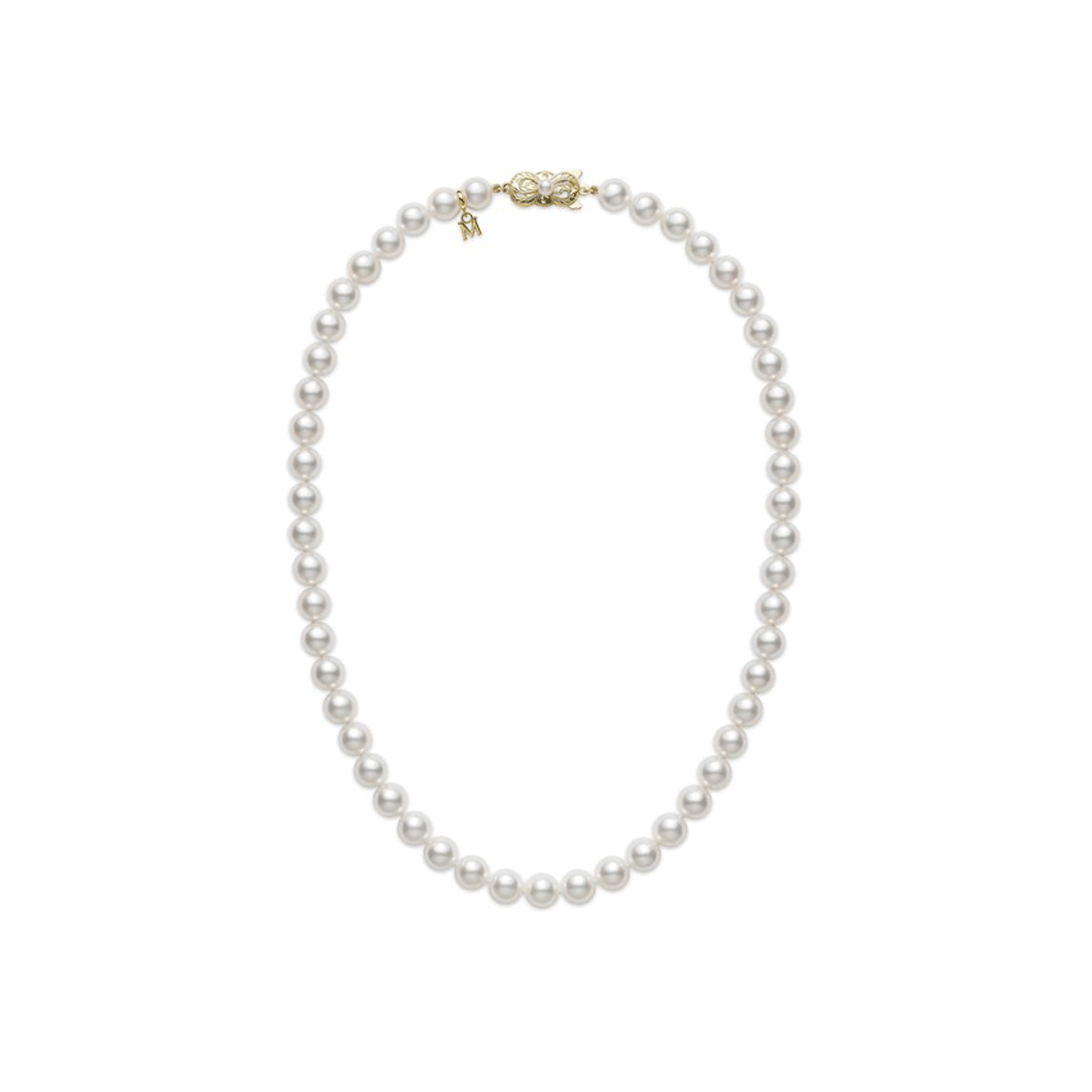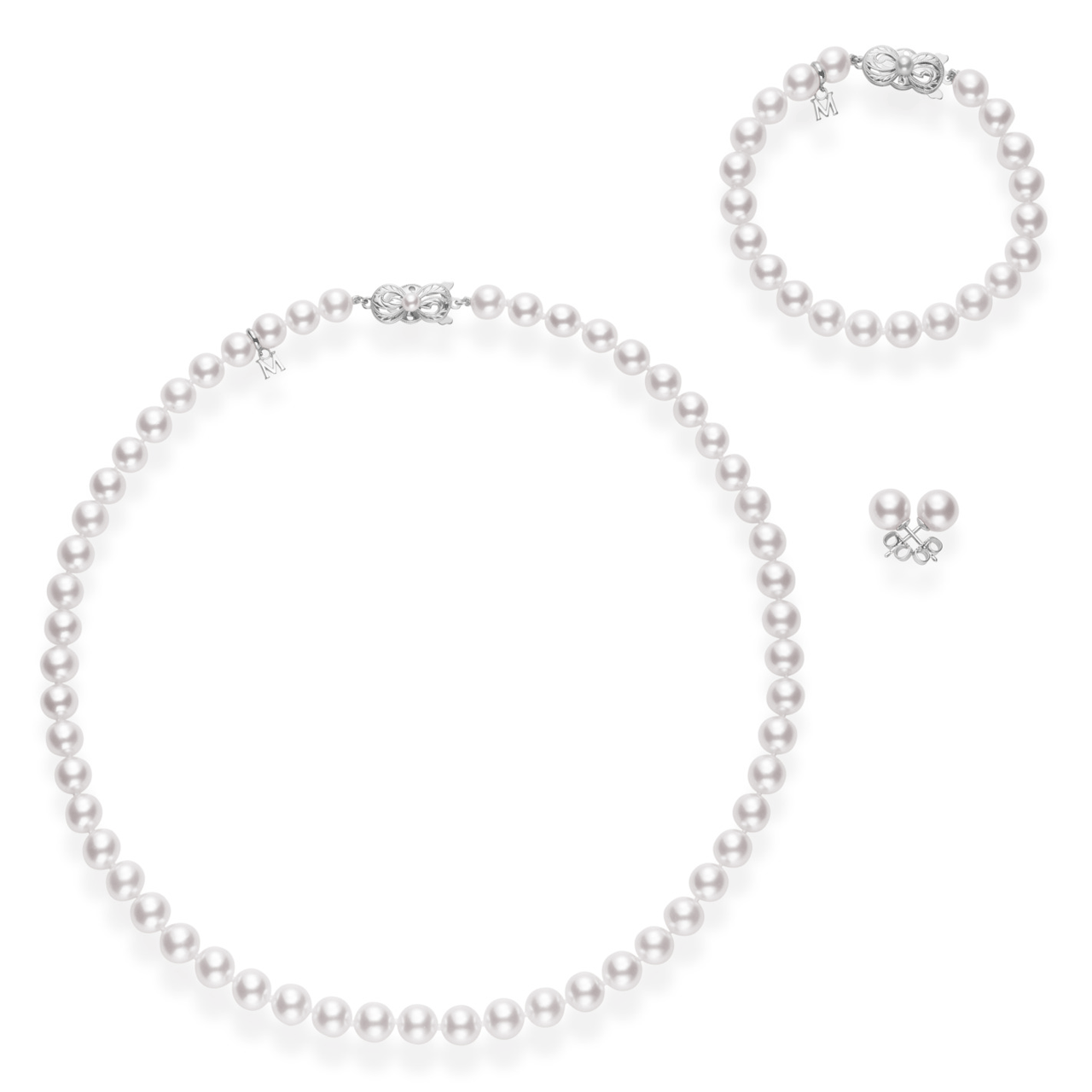Hamilton’s Ultimate Guide To Buying Pearls: Type, Color, Length & More
How To Buy Pearls: Types, Color, Necklace Length & Tips
 Differences In Types of Pearls
Differences In Types of Pearls
Pearls are not only in vogue and a summertime favorite, but they are an undisputed classic. If there is one staple piece of fine jewelry that a woman should have, it’s pearls. But not all pearls are created equal. As pearls are the only organic gemstone there are differences that need to be taken into account when looking to purchase pearl jewelry.
Natural vs. Cultured Pearls
Natural Pearls: Made when a grain of sand or an irritant gets inside the shell of an oyster, muscle or clam by chance. The oyster’s defense system is set off, and the irritant is coated in a fluid called nacre. Layers are added upon layers until that small grain is transformed into a smooth pearl.
Cultured Pearls: Although cultured pearls are not made by chance in nature, they are truly organic and should not be compared to a natural pearl as a lab created diamond is to a mined one. These are simply made on a farm, but the process is a tedious and difficult one, if simple in explanation: with the utmost care, the farmer places the irritant into the shell to begin the pearl forming process.Fun Fact: Mikimoto patented the first cultured pearl.
Natural vs. Cultured Pearls
Pearl Shapes:- · Round Pearl: The pearl is a perfect sphere. This is the most traditional of the shapes, and it is often used in pearl strand necklaces.
- · Near Round Pearl: The pearl has an overall round in shape, but may have a flattened or elongated part.
- · Button Pearl: A pearl that is completely flat.
- · Baroque Pearl: The pearl shape is irregular in shape and a-symmetrical, and is often used in modern or more abstract fine jewelry pieces.
The 4 Main Types of Pearls

Akyoa Pearls: Classic & Traditional
Where: Japanese Origin Color: Classic White Average Price Range: $61-$3,000 Fun Fact: Akoya pearls are never naturally black. Left: Mikimoto 18K White Gold and 6-6.5mm Pearl Stud Earrings
South Sea Pearls: A Gold Rarity
Where: Australia, Indonesia, Philippines Color: White, Silver, Gold Average Price Range: $399-30,000 Fun Fact: Natural South Sea pearls are considered the most rare and valuable. Left: Hueb Apus 18K Gold and South Sea Pearl Bracelet
Freshwater Pearls: The Colorful Cousin
Where: Australia, Indonesia, Philippines Color: White, Pink, Lavender Average Price Range: $69-1,500 Fun Fact: Freshwater pearls make up about 95% of the entire global production of pearls. Left: Triple Row Freshwater Pearl Bracelet
Tahitian: The Only True Black Pearl
Where: Tahiti & French Polynesian Islands Color: Black, Green, Silver Average Price Range: $120-10,000 Fun Fact: The oyster that makes these pearls can weight up to 10 pounds! Left: Mizuki 14K Gold and Tahitian Collar NecklaceFun Fact: June’s Birthstone is a Pearl!
Finding The Right Length of a Pearl Necklace

The Pearl Choker: 14-16 Inches
Left: Mizuki 18K Yellow Gold and Pearl Necklace
The Pearl Princess Necklace: 17-19 Inches
Left: Mikimoto 18K Gold and Akoya Pearl Necklace, Bracelet, and Stud SetThe Pearl Rope Necklace: 36 Inches or Longer
Opera length pearl necklaces and other size can be custom ordered through Hamilton at any time. Contact our expert team, and we will be glad to assist you.
The Pearl Rope Necklace: 36 Inches or Longer
Left: Freshwater Pearl 42 Inch NecklaceThe Charming Single Pearl Necklace
Opera length pearl necklaces and other size can be custom ordered through Hamilton at any time. Contact our expert team, and we will be glad to assist you.





